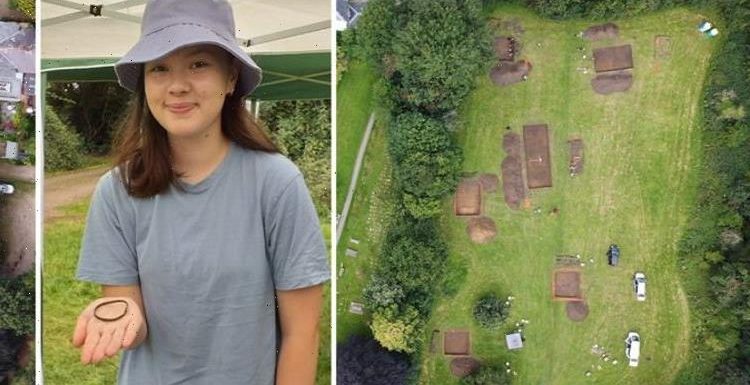
Archaeologists may have found burial site of the Queen of Mercia
We use your sign-up to provide content in ways you’ve consented to and to improve our understanding of you. This may include adverts from us and 3rd parties based on our understanding. You can unsubscribe at any time. More info
Discovered this summer by researchers from the University of Reading, the site has been linked to one of the most powerful women from the Early Middle Ages. Evidence of the 1,300-year-old monastery was uncovered on the grounds of the Holy Trinity Church in Cookham, on the banks of the River Thames. Until now, the site’s location has remained a mystery, despite being present in historical records.
Archaeologists believe the monastery was once ruled over by Queen Cynethryth, the widow of Mercia’s revered king Offa (757 to 796 AD).
The researchers have so far found evidence of timber buildings and artefacts from the monastery’s long-gone residents.
Even more importantly, the excavators have an inkling the Anglo-Saxon queen’s remains could be found at the site.
Dr Gabor Thomas, who is leading the excavation, said: “The lost monastery of Cookham has puzzled historians, with a number of theories put forward for its location.


“We set out to solve this mystery once and for all.
“The evidence we have found confirms beyond doubt that the Anglo-Saxon monastery was located on a gravel island beside the River Thames now occupied by the present parish church.”
Very little is known about what life may have looked like at the monastery but the uncovered artefacts are beginning to shed light on this piece of Anglo-Saxon history.
In particular, the artefacts have given the archaeologist insight into how the monastery’s nuns and priests dressed, worked and ate.
Built along the banks of the Thames, the Cookham monastery was only one in a chain of Christian outposts built in Anglo-Saxon England.
Essex: Archaeologists discover Anglo-Saxon tomb in Prittlewell
The Thames served as an important trade route and the stretch of the river where Cookham is found demarked the border between the kingdoms of Mercia and Wessex.
So far, the researchers have found evidence of food, pottery, and personal items such as bronze bracelets and pins.
Very little is also known about the life and death of queen Cynethryth.
She is, however, the only Anglo-Saxon queen consort to have had her face stamped on coins.


Cynethryth was most likely of Frankish origin and died sometime after 798 AD.
Dr Thomas said: “Cynethryth is a fascinating figure, a female leader who clearly had genuine status and influence in her lifetime.
“Not only were coins minted with her image, but it is known that when the powerful European leader Charlemagne wrote to his English counterparts, he wrote jointly to both King Offa and Queen Cynethryth, giving both equal statuses.
“We are thrilled to find physical evidence of the monastery she presided over, which is also very likely to be her final resting place.”

After the death of her husband in 796 AD, Cynethryth joined a religious order and became the abbess of the monastery at Cookham.
Her husband, King Offa, is widely hailed as one of the most powerful Anglo-Saxon kings until the rise of Alfred the Great.
Offa is best remembered for constructing Offa’s Dyke – an earth barrier on the border between England and Wales.
The Mercian king’s domain stretched between the Trent and Mersey rivers in the north to the Tames Valley in the south, and from the Welsh border in the west to the Fens in the east.
Source: Read Full Article